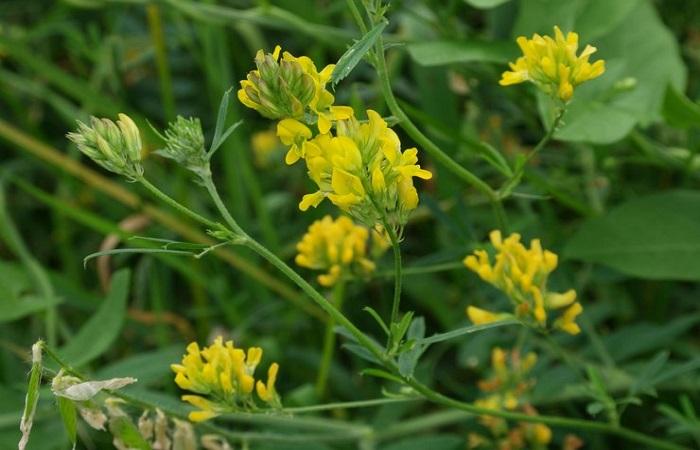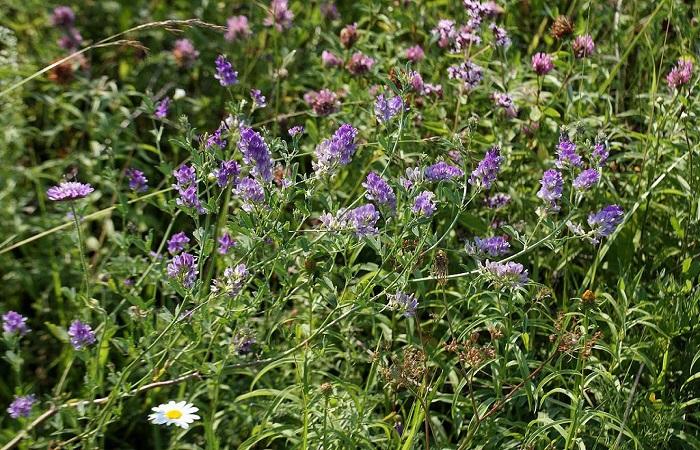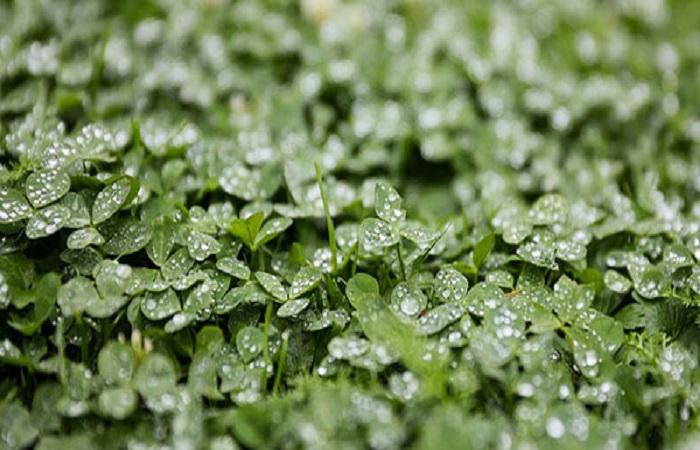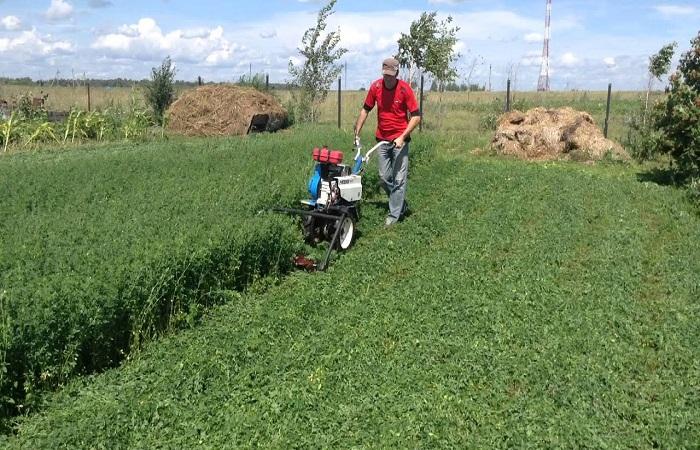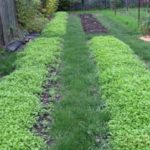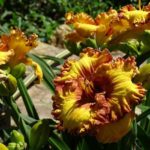Over time, the fertility of agricultural soils decreases, as cultivated plants draw all the nutritional components from the soil. Green manures, which are sown both in spring and autumn, help to increase fertility indicators. There is a whole list of plants that can be used to improve soil quality. Before using alfalfa as green manure, it is worth figuring out when it is best to sow this perennial and how to incorporate it into the soil.
Types and varieties of plants
To increase nutritional value and fertility, gardeners and farmers often use green manure plants; alfalfa is considered one of the most popular. In total, there are about 100 species and varieties of this crop, so it is important to understand whether all are suitable for improving soil characteristics.
The following plant varieties are most suitable for this purpose:
- Yellow crescent. The species grows up to 55 cm in height and is characterized by increased resistance to pathogenic microorganisms and insect pests, as well as temperature fluctuations and bad weather conditions. Almost any type of soil is suitable for growing green manure.
- Blue sowing. This type of alfalfa has a more lush ground part than the previous variety and grows up to 80 cm in height. In addition to increasing soil fertility, powerful vegetation protects soils from erosion due to the fact that the roots of the crop go 3 meters deep into the ground.
For cold regions, it is worth giving preference to northern alfalfa, as it can withstand significant temperature drops.
Pros and cons of alfalfa as green manure
When choosing alfalfa as green manure for sowing on your site, it is worth studying the advantages and disadvantages of this crop.
Those who have already repeatedly grown a plant for subsequent embedding in the ground highlighted the following advantages:
- Replenishment of nitrogen reserves in the soil. When a culture interacts with special bacteria, the process of producing a macroelement necessary for the development of subsequently planted plants is launched.
- Increased fruiting. Because alfalfa's roots penetrate quite deep into the soil, it helps prevent soil erosion.
- Protection of the soil from the effects of heat and cold.Thanks to this crop, it is possible to prevent the soil from drying out in hot summers and freezing in frosty winters; in addition, alfalfa protects the site from excess moisture in rainy weather.
- Fighting pathogenic microorganisms. Alfalfa prevents the development of pathogens in the soil and prevents weeds from growing.
However, this green manure plant also has some disadvantages:
- The seeds of the crop are much more expensive than other green manures, so not every owner of a personal plot will be able to afford such a purchase.
- Requirement of seed material for moisture. If the soil in the area is too dry, the seeds will not sprout.
Rules for sowing and care
To obtain maximum germination of alfalfa seed material, it is necessary to sow it correctly and provide competent agrotechnical care.
Experienced gardeners recommend adhering to the following instructions:
- If sowing seeds is planned for spring, then the soil is prepared in the fall, digging it to a depth of 25 cm.
- On acidified soils, add lime before digging the soil.
- In the spring, as soon as the snow melts and the soil warms up to a sufficient depth, the area where it is planned to sow alfalfa is harrowed. This will allow moisture to remain in the soil, and then seed germination will increase.
- The seed material is pre-mixed with fine river sand.
- Sow seeds to a depth of 2 cm.
- After finishing the work, they go over the entire area with a roller to compact the soil.
To increase the germination of alfalfa seed material, the seeds are first dried in the fresh air and the integrity of the shell is mechanically broken.
When planning to use alfalfa as green manure, the gardener must remember that this is a perennial plant, and he will see the expected effect only after 2 or 3 years.
Proper care of crops includes maintaining an optimal degree of moisture, applying fertilizers and preventing diseases. Excess moisture, as well as its lack, harm the crop, especially at the stage of seed germination. If the soil on the site is moist enough, additional irrigation will not be required. It is necessary to moisten the crops only if there is intense heat and there is no rain.
If the soil on the site is poor, then mineral fertilizers are applied before sowing, this will increase the volume of flowering and increase the green mass. After germination, alfalfa is guided by the appearance of the plant and uses fertilizing only if it is clear that the crop lacks nutritional components.
Spring or autumn
It is allowed to sow alfalfa material from spring to autumn, at the discretion of the gardener. However, the preferred time is still spring. This is due to the fact that after the snow melts, the soil acquires the optimal moisture necessary for successful seed germination.
How to mow alfalfa?
A green manure plant is mowed at the time of active flowering, when the green mass contains the highest concentration of useful substances; as a rule, this occurs 2 months after sowing the seeds. Work is carried out only in dry and clear weather.Lignified stems are not suitable for subsequent embedding in the soil, so they are used for technical needs on the farm.
Sealing the soil after mowing
Alfalfa is completely mowed in the second year of development, before flowering begins. Young shoots of the crop decompose faster in the soil, so it is important not to be late with the work. The soil is dug up shallowly along with the alfalfa and turned over so that the crop is underground.

